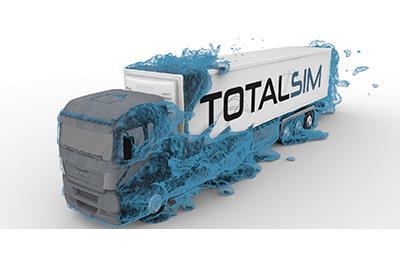
A web-based system for simulating the aerodynamic efficiency of HGVs is being developed to help operators reduce fuel usage and fleet emissions.
Part-funded through the DfT’s Low Emission Freight and Logistics Trial, the aerodynamic configurator for transport (ACT) will enable fleet managers to select the most efficient configuration of truck and trailer for an operation.
It will assess vehicle shapes and combinations for aerodynamic efficiency under a range of real-world conditions and drive cycles.
Leading the project is computational fluid dynamics (CFD) consultancy TotalSim, which will collaborate with fuel-saving analytics firm Dynamon.
TotalSim MD Rob Lewis said: “Using CFD, we can simulate the aerodynamic efficiency of any vehicle – usually to help make racing cars go faster – but in this instance we are interested in increasing fuel efficiency to reduce HGV emissions.”
He added that typically CFD requires “costly computers and software”, and engineers with specialist knowledge, whereas this system will be jargon-free and work with a web browser.
“Transport operators of all technical abilities can try out different configurations quickly and easily in order to deploy the most efficient cabs and trailers,” said Lewis. “This will dramatically reduce journey costs and greenhouse gas emissions alike.”
Combined with telematic data capture, the ACT will help inform route and weather-specific planning decisions to maximise haulage company profit and return on investment (ROI) of each vehicle.
Dynamon CEO Angus Webb said: “TotalSim will identify the best aerodynamics shapes and Dynamon will use fleet telematics data to identify the potential fuel saving and ROI.
"This will both improve investment in aerodynamics by fleets and stimulate innovation from aerodynamics suppliers.”
The DfT has awarded a grant of £392,240 towards the total £560,342 project costs.













![DP World Modal Shift Programme Image[72690]](https://d2cohhpa0jt4tw.cloudfront.net/Pictures/100x67/4/9/7/17497_dpworldmodalshiftprogrammeimage72690_781836.jpg)
